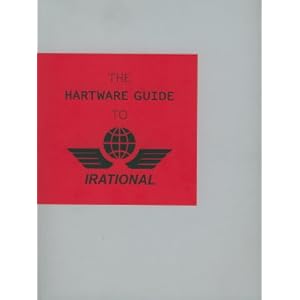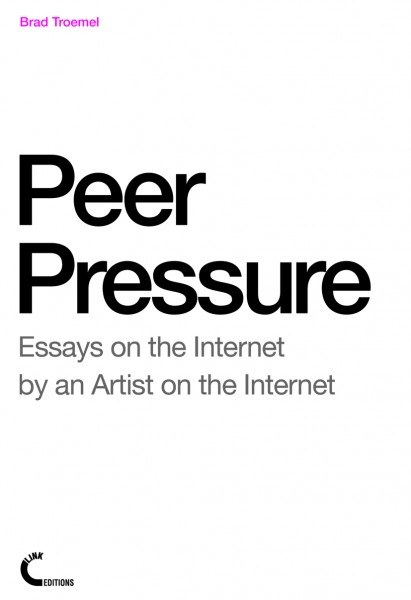Anne Laforet: La conservation du net art au musée. Les stratégies à l’œuvre (2009) [French]
Filed under thesis | Tags: · internet, internet art, media art, net art, preservation
“The preservation of net art is a complex topic which requires the construction of a specific approach to look at internet artwork, one that takes into account the material dimension of the artwork. Preservation does not deal only with aesthetics, not only about the way the audience experiences artworks, but needs to have access to these types of information so the preservation process can take place.
This research presents an overview of works created by and for the Internet. The artworks which are described in this work are chosen specifically as examples for preservation purposes, and not according to a typology created for different purposes. This research also presents an overview of the institutions (based in Europe and in North America) that have developped specific preservation strategies. It takes the form of case analyses, which stem from observations, readings, and interviews.
This thesis also looks into the interaction between preservation and the other functions of the museum (collection, exhibition, research). Preservation cannot be tackled independantly, because it deals with the artwork’s life cycle within the museum. Every art work has to be treated in a way which is specific to itself. The issue of notation also arises then, as it’s necessary to find ways to describe artworks, especially as their technological environments will eventually be obsolete. This research explores the ways to compensate obsolescence: emulation, migration, score, re-interpretation, self-archiving, automatic archiving, etc (which can be also combined).
The attention to net art work as material socio-technical object means to find a way to look at those works : the code which composes the artwork, the files, its different files and the way they are organized, what happens on the screen, the interactions between the artward and the audience that experience it. The notions of code performativity and activation are useful in this approach.
Preservation happens only when value is attributed to what is preserved. Two categories of actors outside of the museum take part into this process: the art market on the one hand and art critics and art historians on the other. Both influence and get influenced by the museum.
All these elements allow the composition of a pluridisciplinar cartography on the topic of net art preservation.”
The preservation of Net Art in museums. The strategies at work
PhD thesis, University of Avignon, France
Supervisor: Jean Davallon
The Hartware Guide to Irational.org (2006) [English/German]
Filed under catalogue | Tags: · art, copyright, intellectual property, internet, internet art, media art, net art

Published on the occasion of the exhibition “The Wonderful World of Irational.org. Tools, Techniques and Events 1996-2006” in the PHOENIX Halle Dortmund from 30. 08. till 29. 10. 2006, curated by Inke Arns and Jacob Lillemose.
“Irational is a loose grouping of six international net and media artists who came together around the server irational.org, founded by the British net artist Heath Bunting in 1996, going on to make decisive contribution to early net art from the mid-1990s onward. With dry humor and minimal aesthetics, irational commented the Internet hype of the mid-to-late 1990s, competing with the commercialization-euphoria of the new market by developing its own pseudo-ventures. Net art was immediate during this period, neither needing nor enjoying the safety of a mediating space or instance. This is why irational often hit upon humorless trademark attorneys, who wanted to keep irational from using brand names such as 7-11, American Express, Sainsbury’s and Tesco. These encounters, which the exhibition documents extensively, were little more than a prelude to more recent developments in the field of copyright, intellectual property, and brand protection. Heath Bunting was the first net artist to retire in 1997, putting an end to his exclusive work on the net and turning back to more intensive work in public space, which the Internet has become such an important part of today. If the activities of irational during its “net phase” were dedicated to calling virtual boundaries into question, its members now experiment with interrogating and overcoming economic, political, and social boundaries in real space, producing a great deal of comic relief, among other things.” (from the press release for the exhibition)
With texts by Susanne Ackers, Inke Arns, Matthew Fuller, Francis Hunger, Jacob Lillemose, Darija Šimunović
Editors Susanne Ackers, Inke Arns, Francis Hunger, Jacob Lillemose
Publisher Revolver – Archiv fuer aktuelle Kunst, Frankfurt am Main, October 2006
ISBN 3865882994, 978-3865882998
136 pages
PDF (6 MB, updated on 2023-3-10)
Comment (0)Brad Troemel: Peer Pressure: Essays on the Internet by an Artist on the Internet (2011)
Filed under book | Tags: · 4chan, anonymous, art, internet, internet art, memes, net art, relational aesthetics, surf club, tumblr, web, youtube

Peer Pressure is a collection of essays previously published online between 2010 and 2011. In the author’s words, “each essay is an impassioned description or prescription to understand the digital space we inhabit differently.” Most of these writings have been highly influential for the (relatively) small community the author addresses, eliciting many heated debates. The texts idealistically address creative platforms, image aggregators, relational practices, internet memes and much more.
Publisher LINK Editions, October 2011
ISBN 9781470915612
138 pages
Licensed under Creative Commons Attribution-NonCommercial-ShareAlike 3.0
PDF (Lulu.com)
Comment (0)
